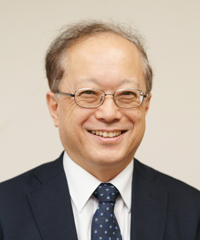Measures to prevent outbreaks of COVID-19 tell us to avoid the Three Cs: closed spaces, crowded places, and close-contact settings such as close-range conversations. Regarding these measures, I have received the following questions and cries for help from childcare providers.
"Childcare facilities are, in principle, supposed to care for children at close range, with warmth and sensitivity for their needs, but is such childcare possible when practicing social distancing?"
The answer is "No!" It is not possible to care for children while maintaining a social distance of two meters. Infants and preschool children grow as they develop relationships based on attachment to their parents and caregivers. Hugging children and engaging in play that involves physical contact helps them develop healthy social skills and empathy. Attachment behavior in children is aroused by the desire for close contact with a parent or caregiver. Child-raising activities that do not satisfy a child's desire for close contact amounts to neglect.
Preschool and younger children are not able to control their own conduct and behavior themselves. By crying, they are held and comforted by their parents or caregiver, and thus able to maintain a sense of calm.
To prevent the spread of COVID-19 infection, adults are asked to practice social distancing, but childcare facilities can only be made an exception.
This exception does not apply to just childcare. In medical care, even if a patient is infected with the coronavirus, doctors and nurses touch the patient's body during treatment, if necessary. Treatment or healing in Japanese, "teate," is expressed as "providing a (healing) touch."
It goes without saying that to do that, doctors and nurses rely on their medical knowledge. Starting with disinfecting their hands, they also wear protective clothing, including a mask and face shield to prevent transmission when attending to the patient.
As for childcare and caregiving facilities, as our starting point, we should think of them as exceptions, that is, places where the three rules of avoiding closed spaces, staying away from crowded places, and social distancing do not apply.
Fortunately, it is extremely rare for infants and toddlers to infect each other with COVID-19. In most cases, infections do not spread from child to adult, but rather from adult to child.
Childcare facilities cannot respond with the same heavy equipment as doctors and nurses, but at the facilities, childcare providers should be aware of the nature of their specialized work and ensure that they do not become infected themselves.
Recently it has become possible to request and receive PCR testing regardless of whether one shows symptoms or has had close contact. On the internet, it is possible to find medical facilities that provide the testing. However, because testing in the absence of symptoms is not covered by insurance, the cost is still high, but if the childcare providers receive regular PCR testing, it will be possible to minimize infection from adults to children. Of course, the fees for testing should not be borne by the individual childcare providers, but rather a public expenditure. However, until that becomes a reality, it is necessary to also consider the possibility of childcare facilities and childcare organizations temporarily bearing the cost of the testing. By doing so, it will also be possible to ease the anxiety of childcare providers.
Childcare providers and caregivers should carry out active PCR and antigen testing, and rather than avoiding the three Cs, aim for close and caring childcare.



 Yoichi Sakakihara
Yoichi Sakakihara










